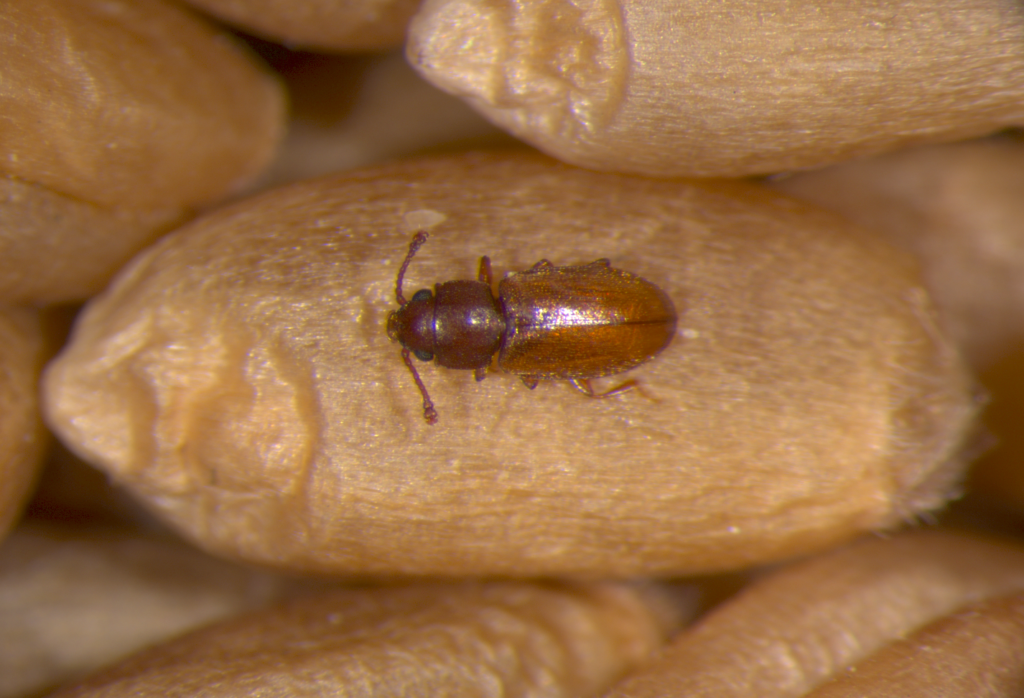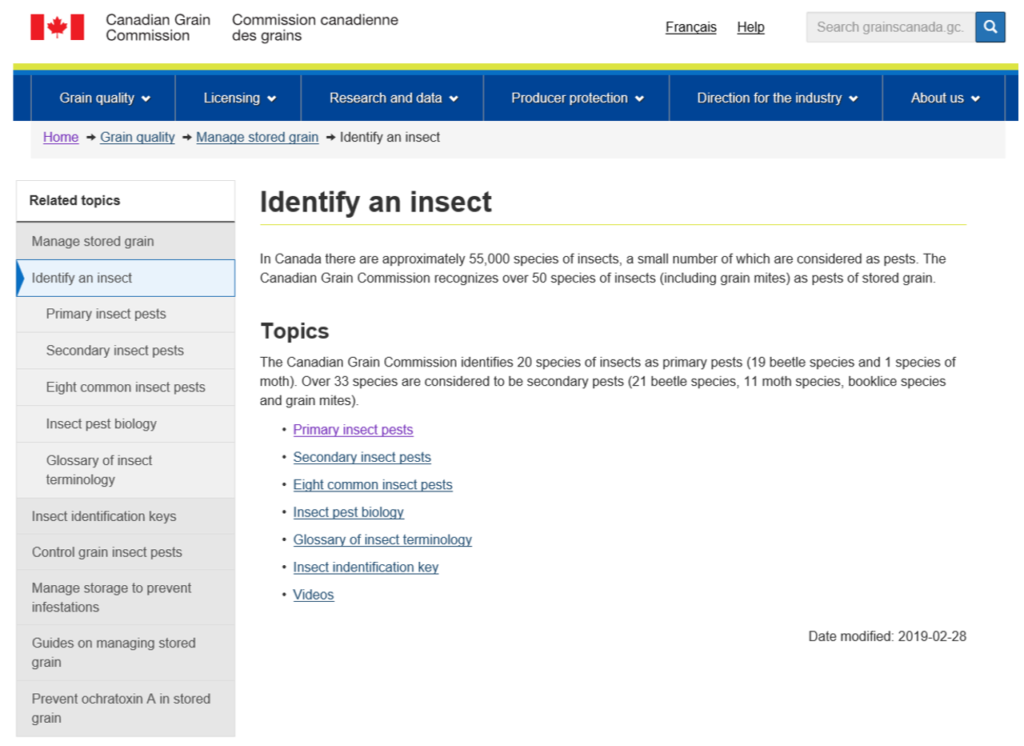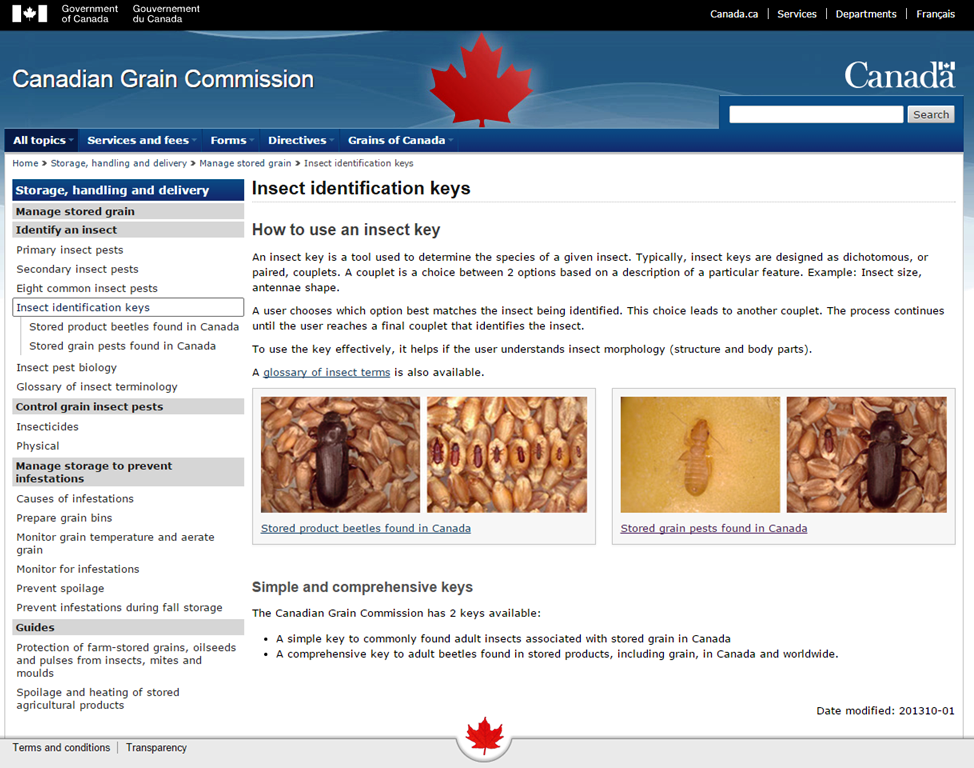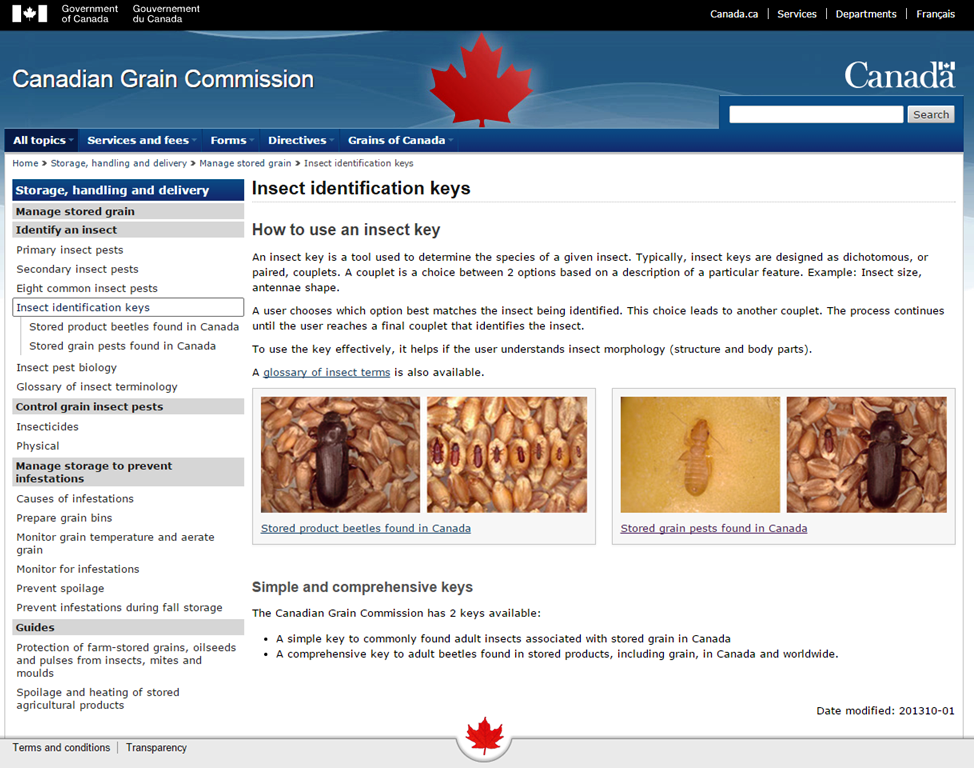The rusty grain beetle (Cryptolestes ferrugineus) is the most common and serious pest of stored grain on farms and in elevators across the Canadian prairies. It makes up about 95 % of all grain insects detected by the Canadian Grain Commission in grain elevators across the country. Its very small size (1.5–2.5 mm long) allows it to easily crawl between grain kernels and quickly spread throughout stored grain. Its high fertility (up to 423 eggs per female) and fast development (about one generation per month) can result in serious losses if the grain is kept above 20 °C, or if it is kept too moist for too long, or if there is a hot spot or spoiled grain somewhere in the grain bin because this species thrives in spoiled grain. Additionally, the Canadian Grain Act prohibits the receipt and marketing of infested grain (i.e., grain containing any injurious, noxious or troublesome insect or animal pests). Elevators cannot accept grain if they detect this insect in it.
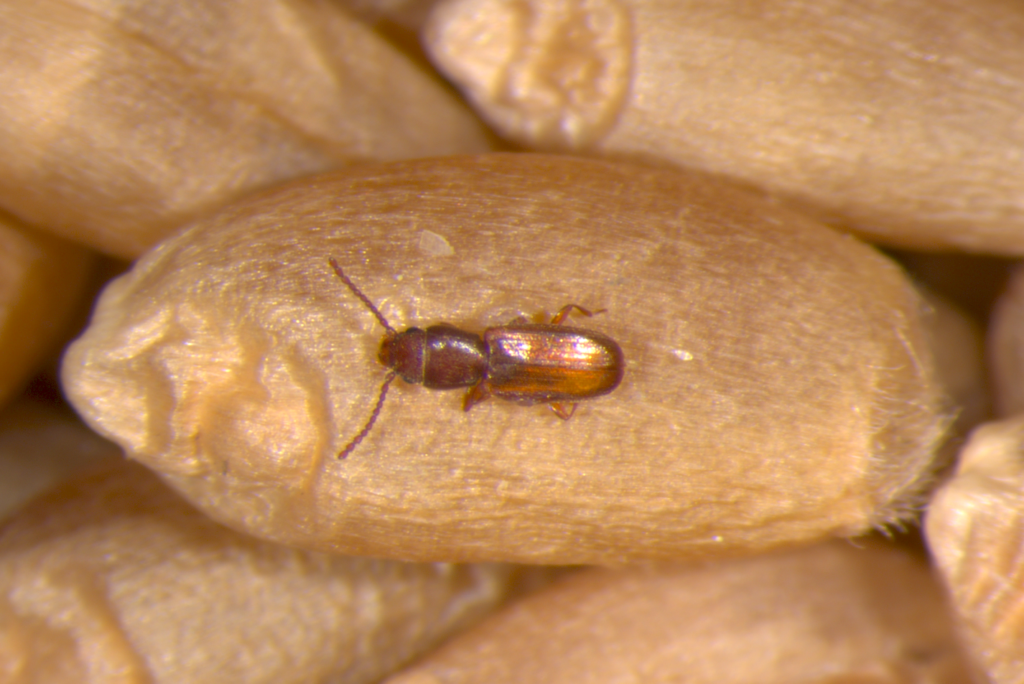
The rusty grain beetle’s most favoured foods are: wheat, rye, corn, barley, and millet. It can also develop on a wide range of fungus species and moldy substrates. Interestingly, this beetle cannot penetrate undamaged seeds, so it requires a seed to be either spoiled, broken or cracked (a microscopic crack will suffice) in order to feed on it. Physical damage to grain is typically caused by harvesting and handling. The rusty grain beetle cannot develop below 20 °C so grain stored in dry conditions and maintained below 20 °C will be safe from infestation from this species. Keeping grain below 18 °C will ensure that it is safe from other insect species as well.
Effective ways to eliminate or reduce the risk of infestations include:
• Thoroughly cleaning and sanitizing bins between uses;
• Cleaning up grain residue from the surroundings to prevent the multiplication of grain insects near grain storage areas (spillages on the ground, residues left in combines or augers, etc.);
• Ensuring bins are sealed tight to prevent moisture or snow from entering;
• Reducing the temperature and moisture content of stored grain to safe levels as soon as possible after harvest (using these helpful Safe Storage Charts).
• Also access the Canadian Grain Commission’s information on Grain Quality.
To learn more about current storage practices, storage issues, and to understand the main insect issues in stored grains across the Canadian prairies, Dr. Vincent Hervet with Agriculture and Agri-Food Canada (vincent.hervet@agr.gc.ca) is currently surveying insects in farm grain bins across the Prairie Provinces of Canada. Volunteer growers in Alberta, Saskatchewan, and Manitoba are needed to participate in this survey so we can better understand issues in farm-stored grain and how to address them.
HOW YOU CAN HELP: If you wish to participate in this survey, or if you wish to have more details about the survey, please contact Dr. Vincent Hervet (vincent.hervet@agr.gc.ca; 204-915-6918).

